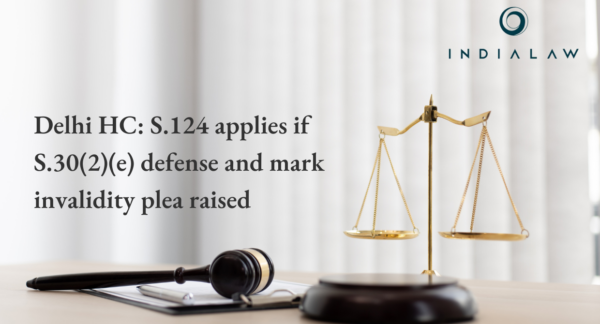Analysis of two injunctions by Delhi HC – Ericsson v. Xiomi Tech. & Micromax v. Oneplus Tech.

By Srinivas Atreya Chatti
The past few weeks have seen some interesting developments in the realm of technology and intellectual property laws with both foreign and domestic mobile phone/technology manufacturers aggressively resorting to courts in an increasingly competitive Indian mobile phone market space. The recent Orders passed by Delhi High Court in two separate cases, both involving mobile phone manufacturers, are noteworthy and significant for several reasons both from a commercial as well as a legal standpoint. Although both cases discussed and considered distinct issues, similar reliefs in the form of injunctions were sought and granted. Moreover, the impact of these orders converges on more than one level and is bound to have an effect on the future course of intellectual property and technology laws. Going even further, these cases also highlight a fascinating interplay and interpretation of TRIPS with the domestic Intellectual Property Laws, while also the application of Civil Procedure Code and Laws of Injunction. From a broader perspective, these decisions come in the light of growing competition in the Indian mobile phone industry/market especially as smaller or newer entrants in the Indian market have started to compete and affect the market shares of larger already established entities.
In the case of Ericsson v. Xiomi Tech., the Delhi High Court by an Order dated 8th December 2014[3]granted ex-parte injunction against a Chinese mobile phone manufacturer, Xiaomi for infringement of the Swedish technology giant Ericsson’s patents. The ex-parte order injuncted Xiaomi from selling, advertising, manufacturing or importing devices using technologies that infringe the certain Standard Essential Patents (“SEP”) of Ericsson in India. It also directed the imports of the products in question be stopped by customs officials under the IPR Rules, 2007 and local commissioners were also appointed to visit the Xiaomi’s offices to ensure the implementation of these orders. Subsequently, Xiaomi on appeal against the aforesaid Order of the single judge and received some respite when the Division Bench of the Delhi High Court on 16th December 2014 conditionally allowed Xiaomi to sell their devices until February, 2015. The Order among several other conditions stipulates that Xiamoi can sell only those devices which use chipsets made by particular manufacturer which is a licensee of the Ericsson.
The patents in question relate to Adaptive Multi-Rate Wideband (AMR), 3G and EDGE technologies and fall under a class of patents called SEPs. A patent that protects technology essential to a standard is called SEP. These SEPs are indispensable while manufacturing standard-compliant products such as smart-phones or tablets. Patents that are considered essential to execute a specific industry standard cannot be exploited like any other patent, and certainly not to the elimination of other market participants.
Standards are by and large set by Standard-Setting Organizations (“SSOs”). These SSOs generally require a declaration of essentiality from the patent owner himself. This declaration is often coupled with an affirmation of the Fair, Reasonable and Non-Discriminatory (“FRAND”) terms as a licensing commitment.
For the standard setting practice to remain beneficial and not be reduced to a mere farce, it becomes imperative that in situations where adopting a standard would include integration of a patent into the industry standard, the patent holder should not be in a position to irrationally abuse its market power to the loss of the entire industry, for instance, by charging an inflated royalty rate. In today’s information age where electronic and communication devices are ubiquitous, SEP’s hold great importance as it would be impossible otherwise to manufacture standard-compliant electronic and communication devices such as smart phones or tablets.
With increasing litigation in other jurisdictions across the world with regard to SEP’s, one prevailing opinion is that when an asserted patent is an SEP encumbered with a FRAND licensing commitment, the patent holder should be prevented from obtaining injunctive relief. Otherwise, it is argued that the patent holder can use the threat of an injunction to extract unfairly high royalties and impede implementation of the standard. On the other hand, patent-holders have argued that a blanket rule barring injunctive relief for FRAND-encumbered SEPs fails to take into account the fact-specific nature of FRAND commitments, fundamentally alters the dynamics of negotiating the specific details of a FRAND license, and erodes the commercial value of these SEPs.[4]
Even in the present case, although the injunction was conditionally relaxed subsequently, it is pertinent at this point that the patents, which are presently the subject matter of this dispute, may also form subject matters of other litigations which Ericsson had earlier initiated against other Indian mobile phone manufacturers including Micromax, Gionee and Intex. One independent view in this regard is that when the same patents are potentially in question under other cases as well, there is no need for the Courts to rush to grant an injunction against a new defendant. At this stage however, it will be interesting to observe the case as it pans out especially in the shadow of the earlier Erricson-Micromax dispute and the final decision is sure have a far reaching impact on the scope and future development of SEP’s in India.
In the other recent development involving mobile phone manufactures, the Delhi High Court in the case of Micormax v. Oneplus Tech. passed an order restraining another Chinese manufacturer, OnePlus from marketing or selling devices using ‘Cyanogen’ mark in India. CyanogenMod is a modified version of the popular mobile operating system Android developed by Cyanogen, a software developer based out of California.
The Delhi High Court on 16th December passed an Order[5] of injunction against OnePlus which is a new entrant in the Indian market restraining them from marketing, selling and shipping its devices in India on the ground that Micromax has the exclusive rights to use the ‘CyanogenMod’ operating system by virtue of an exclusivity agreement with its developer Cyanogen. The Court on perusal of the provisions of the ‘Ambient Services and Application Distributions Agreement’ between Micromax and Cyanogen (which gives Micromax exclusive license to distribute the Cyanogen OS in the Indian subcontinent region) upheld the exclusive jurisdiction clause of the agreement between Micormax and Cyanogen. . Earlier, OnePlus had filed a suit for injunction against the Micromax on the basis of a purported Trademark License Agreement with Cyanogen, for restraining Micromax from instituting proceedings in India. However, the Court in the present case held that that the exclusivity agreement between Micromax and Cyanogen would outweigh the non-exclusive trademark agreement between the OnePlus and Cyanogen.[6]
In conclusion, a brief perusal of these two cases summarily raises several important issues which will eventually have to be decided sooner or later. Firstly, the Xiaomi case re-highlights the use of patent laws by patent holders to sometimes extract large sums of royalties and license fees for use of their technologies which signals the need to re-visit the concept of patent pools in especially for smaller or emerging manufacturers especially in emerging markets like India. Further, the growing practice of Indian Courts granting injunctions in patent cases which even involve technologies using SEP licensed under FRAND may also be a cause for some concern[7]. The OnePlus case while largely being a contractual dispute, however may turn up some interesting arguments as the case progresses with regard to the interpretation and applicability of trademark laws in India and the scope of trademark claims. Another aspect which could pervade public debate would be the impact the case could have on future manufacturers entering the burgeoning Indian market.
[1] Telefonaktiebolaget LM Ericsson(PUBL) v. Xiomi Technolgy & Ors.,CS(OS) 3775/2014, Order dt. 08.12.2014 of Delhi High Court
[2] Micromax Infromatics Ltd. v. Shenzen Oneplus Technology Co. Ltd. & Ors., CS(OS) 3761/2014, Order dt. 16.12.2014
[3] http://spicyip.com/wp-content/uploads/2014/12/Order-dt.-08.12.14-Telefonaktiebolaget.pdf (Copy of Order)
[4] Supra
[5] http://www.scribd.com/doc/250369568/Micromax-Limited-v-Shenzhen-OnePlus (Order Copy)
[6] http://barandbench.com/content/212/senior-advocate-rajiv-nayar-elp-lawyers-secure-injunction#.VJQaisABA
[7] http://spicyip.com/2014/12/frand-ly-injunctions-from-india-has-ex-parte-become-the-standard.html




